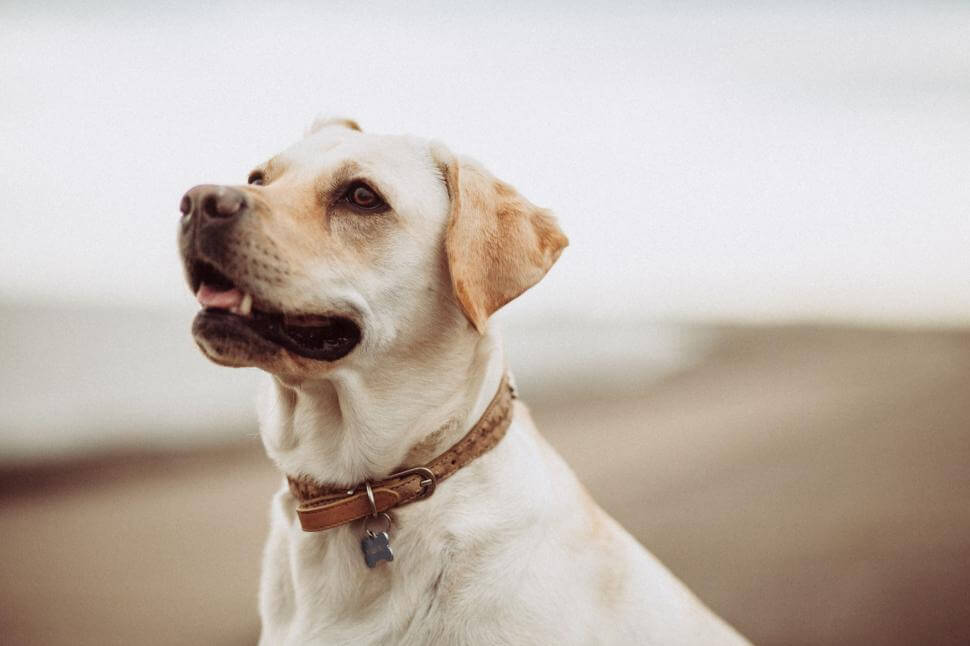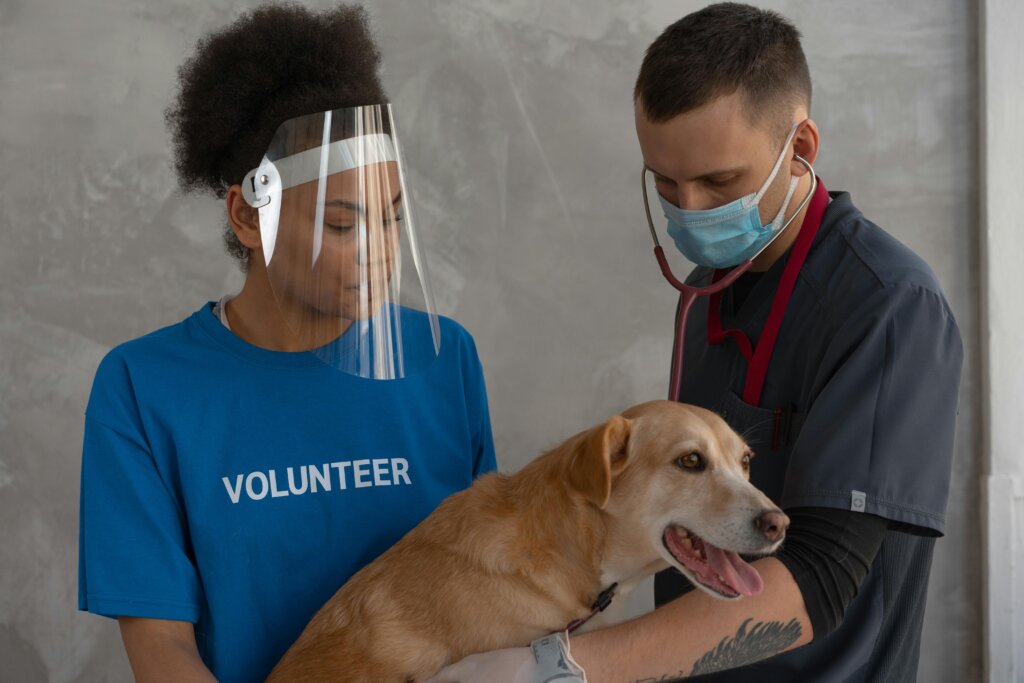How many cups of food should I feed my dog?
Proper nutrition plays a fundamental part in preserving the health and welfare of our cherished dog friends. As conscientious pet owners, we try to give them the finest possible care, and comprehension is essential to this treatment. How many cups of food should I feed my dog?
Ensuring that our dogs receive the right amount of food is paramount, as it directly impacts their overall health and longevity. Dogs need a balanced diet to flourish, just like humans do, so determining the appropriate portion sizes is essential for meeting their nutritional needs.
This thorough manual will explore the nuances of
How many cups of food should I feed my dog?
- Let us take a quick look at the importance of proper dog nutrition, emphasizing the importance of feeding children a balanced diet.
- We will explore why determining the ideal quantity of food to give your dog is vital to their health and welfare, emphasizing the potential risks associated with overfeeding or underfeeding.
- We shall give a synopsis of the blog posts, outlining the article’s key points and topics covered in detail.
Join us as we embark on a journey to unravel the mysteries of canine nutrition and discover the optimal feeding practices for your furry friend.
Factors Affecting Feeding Amount:

Age: Dogs go through various life stages, each with unique nutritional requirements. Puppies, for instance, undergo rapid growth and development, requiring a diet rich in proteins, fats, vitamins, and minerals to support their burgeoning bodies. As a result, they typically need to consume more food per pound of body weight than adult dogs. Adult dogs have different needs, as they are no longer growing rapidly but still require a well-balanced diet to keep them healthy and energetic. Senior dogs, on the other hand, may have decreased energy needs due to reduced activity levels and changes in metabolism. Therefore, adjusting the feeding amount based on your dog’s age is essential to ensure adequate nutrition at every stage of life.
Weight: A dog’s weight directly influences its food intake. Overweight dogs may require fewer calories to reach or maintain a healthy weight, while underweight dogs may require more food to achieve an ideal body condition. Monitoring your dog’s weight and adjusting its feeding amount can help prevent obesity and promote overall well-being. Remember, feeding the right amount of food is crucial How many cups of food should I feed my dog?
Activity Level: Your dog’s activity level plays a significant role in determining their caloric needs. Active dogs, including working breeds or those involved in regular exercise or agility training, burn more calories and, therefore, require a higher food intake to fuel their energy demands. Conversely, sedentary dogs, such as older or less active breeds, may need fewer calories to maintain weight. It’s essential to consider your dog’s activity level when determining the appropriate feeding amount to ensure they receive the necessary energy for their lifestyle.
Breed: Different dog breeds may have varying metabolism rates and dietary requirements. For example, small breeds often have faster metabolisms and might need to eat more frequently to maintain energy levels. In contrast, large breeds may require fewer calories per pound of body weight and have slower metabolisms. Furthermore, some breeds may be more susceptible to particular illnesses, such as gastrointestinal issues or joint problems, which may necessitate adjustments to their diet. Understanding your dog’s breed-specific needs can help tailor their feeding regimen to support their overall health and well-being.
Health Conditions: Certain health conditions can impact a dog’s dietary needs and feeding amount. For example, dogs with diabetes may require a carefully regulated diet to control their blood sugar levels. Similarly, dogs with kidney disease or heart conditions may need a specialized diet low in certain nutrients to manage their condition effectively. Consulting with your veterinarian is essential to determining the most appropriate feeding amount and diet plan and whether any underlying medical conditions affect your dog. Ensuring your dog’s nutritional needs are met is crucial for their overall health and well-being, regardless of their conditions.
Understanding Dog Food Labels:

Dog food labels contain valuable information to support pet owners in making knowledgeable dietary selections for their dogs. Here’s a breakdown of the critical components typically found on dog food labels:
- Ingredient List: The ingredient list provides a detailed inventory of the components used to formulate the dog food. The ingredients are arranged by weight in descending order, with the main ingredient listed first. Look for recognizable, whole-food ingredients like meat, vegetables, and grains. Avoid foods with ambiguous or generic ingredients like “meat by-products” or “animal digest.”
- Guaranteed Analysis: The guaranteed analysis section outlines the lowest and highest percentages of crude fat, crude protein, crude fibre, and moisture in the food. These values give an overview of the product’s nutritional composition.
- Nutritional Adequacy Statement: This statement indicates whether the meal satisfies the AAFCO (Association of American Feed Control Officials) nutritional standards for a specific life stage, such as “complete and balanced for puppies” or “for adult maintenance.”
- Feeding Guidelines: Feeding guidelines provide recommendations on the amount of food you give your dog, depending on their size and activity level. Serving size recommendations may be provided in cups, grams, or another unit of measurement. Following these guidelines closely ensures your dog receives the appropriate nutrition. Adjusting the feeding amount based on your dog’s weight and activity level is essential for determiningHow many cups of food should I feed my dog?
Difference between Feeding Guidelines Based on Weight and Activity Level: Feeding guidelines may vary depending on whether they are based on your dog’s weight or activity level. Guidelines based on weight typically provide a range of recommended servings based on your dog’s size, with larger dogs requiring more food than smaller dogs. On the other hand, guidelines based on activity level take into account factors like exercise frequency and intensity. Canines that are inactive may need fewer calories to meet their energy needs, whereas active canines might require more calories to keep a healthy weight. Understanding these guidelines’ differences can help you tailor your dog’s feeding regimen to meet their needs.
By thoroughly comprehending the material on dog food labels, pet owners can make informed decisions to ensure their dog receives a balanced and nutritious diet. See your veterinarian for any questions or worries about your dog’s feeding plan or nutritional requirements.
Calculating Your Dog’s Caloric Needs:

Determining your dog’s daily caloric requirements is essential for ensuring they receive the appropriate nutrition to support their health and well-being. Here’s why it’s crucial:
- Importance of Determining Caloric Requirements: Understanding how many calories your dog needs is vital because it directly impacts their overall health and weight management. Overfeeding your dog with calories can result in weight gain and obesity, while insufficient calories can result in malnutrition and energy deficiencies. By calculating your dog’s caloric needs, you can modify their diet to fit their unique needs and prevent potential health issues.
- Formulas and Tools for Calculating Calories: Several formulas and tools help pet owners accurately calculate their dog’s caloric needs. Here are some commonly used methods:
- Maintenance Energy Requirement (MER) Formula: The MER formula estimates the number of calories your dog needs to maintain their current weight. It considers your dog’s weight, activity level, and life stage. The formula is as follows:
MER = (30 × Body Weight in kilograms) + 70
This formula provides a rough estimate of your dog’s daily caloric requirements for maintenance.
- Online Calorie Calculators: Many online tools and calculators allow you to input your dog’s weight, age, activity level, and other factors to estimate daily caloric needs. These calculators can be convenient for pet owners looking for a quick and easy way to ascertain the appropriate calorie intake for their dog.
- Consultation with a Veterinarian: Consider consulting with a vet to better evaluate your dog’s caloric needs. To provide personalized feeding recommendations, veterinarians can determine your dog’s factors, such as breed, metabolism, and health conditions.
Pet owners can use these formulas and tools to more accurately determine their dog’s caloric needs and adjust their diet accordingly. Remember to monitor your dog’s weight and body condition regularly, change their feeding plan to eat the correct foods, and keep a healthy weight. Calculating your dog’s caloric requirements is a crucial first step in giving them a healthy and fulfilling diet, and it plays a vital role in determining How many cups of food should I feed my dog?
How to Measure Food:

Accurate portion control ensures your dog’s health and overall well-being when fed the appropriate meals to maintain a healthy weight. Here’s how to measure your dog’s food effectively:
- Importance of Using a Standard Measuring Cup: A standard measuring cup is essential for accurate portion control when feeding your dog. Eyeballing or estimating portion sizes can lead to consistency and overfeeding. A standard measuring cup ensures you provide the appropriate serving size for your dog, depending on specific dietary requirements. It’s also essential to consistently use the same measuring cup to maintain accuracy.
- Potential Pitfalls of Free-Feeding and Overfeeding: Giving your dog free food or letting them eat whenever they please can lead to overeating and weight gain. Dogs may consume more food than they need, resulting in obesity and associated health problems. Also, free-feeding makes monitoring your dog’s food intake difficult and may contribute to behavioural issues such as food guarding or scavenging.
Overfeeding is another common pitfall when portion sizes are not adequately measured. Providing less food, even of high quality, can lead to overindulging in calories and weight gain. Over time, this can contribute to health concerns linked to fat, such as diabetes, heart disease, and joint troubles.
To avoid these pitfalls, measuring your dog’s food accurately and feeding appropriate portions based on age, weight, activity level, and dietary needs is essential. A standard measuring cup ensures your dog has the right food to support its health and well-being. Remember, proper portion control is crucial in determining How many cups of food should I feed my dog?
and maintaining a healthy weight.
Feeding Puppies:
Feeding puppies require special attention to ensure they obtain the nourishment necessary for healthy development and growth. Here are some essential points to consider when feeding your puppy:
- Specific Guidelines for Feeding Puppies: Petting guidelines vary by age, size, and breed. Here’s a general overview of feeding recommendations based on age:
- Newborn to 4 weeks: Puppies rely solely on their mother’s milk during this time. If the mother is unavailable or unable to nurse, consult a veterinarian for guidance on appropriate milk replacers.
- 4 to 8 weeks: Puppies can begin transitioning to solid food. Start with soft, moistened puppy food to make it easier for them to eat. Provide modest, frequent meals all day long to accommodate their tiny stomachs.
- Eight weeks to 6 months: Feed puppies three to four meals daily. Choose a high-quality puppy food specifically formulated to satisfy their dietary requirements throughout this critical growth stage.
- Six months to 1 year: Gradually transition puppies when their first birthday approaches and switch to adult dog food. I feed them three meals daily, gradually reducing them to two as they mature.
Monitoring your puppy’s weight and adjusting the feeding amount is essential to ensuring healthy growth. Remember, the goal is to maintain a lean body to support development.
- Importance of Feeding a Balanced Diet: A balanced diet supports a puppy’s growth and development. It should include the right proportions of proteins, fats, carbohydrates, vitamins, and minerals to meet its nutritional needs.
Proteins are necessary to develop powerful muscles and tissues, while fats provide energy and support brain development. Carbohydrates supply a steady energy source; these minerals and vitamins are essential for good general health and immune function.
Choosing high-quality puppy food formulated specifically for their life stage and size is essential. Avoid feeding puppies human or adult dog food, as these may need to provide the appropriate nutrients in the proper proportions.
By offering a nutritious diet customized for your puppy’s specific needs, you can ensure your puppy grows into a healthy, happy adult dog. Do not forget to seek advice on individualized feeding regimens from your veterinarian based on your puppy’s age, size, and breed. Proper nutrition is crucial in determining How many cups of food should I feed my dog?
and supporting its overall health and well-being.
Feeding adult dogs:
Feeding adult dogs requires careful consideration of their weight, activity level, and dietary needs to maintain optimal health and well-being. Here’s what you need to know:
- Recommended Feeding Amounts: Feeding guidelines for adult dogs typically recommend a specific amount of food based on their weight and activity level. Here’s a general overview of recommended feeding amounts:
- Weight-Based Recommendations: Adult dogs should be fed a certain number of calories per pound of weight in the body. For instance, a thirty-pound dog might need around 30 calories per pound to maintain weight. This calculation can vary depending on breed, metabolism, and age.
- Activity Level: Active dogs with higher energy requirements may need more calories than sedentary dogs. If your dog engages in consistent physical activity or sports, they may require additional food to fuel their activity levels. Conversely, less active dogs may need fewer calories to avoid weight gain.
Observe the feeding recommendations on your dog’s food packaging or consult your veterinarian to ascertain the right serving size based on your dog’s needs. Regularly checking your dog’s weight and physical condition guarantees they get the proper nourishment.
- Tips for Adjusting Portion Sizes: Adjusting portion sizes may be necessary if your dog’s weight or activity level changes. Here are some tips for making adjustments:
- Weight Changes: If your dog gains or loses weight, it may be necessary to adjust its portion sizes accordingly. If your dog is overweight, reducing food intake can help it shed excess pounds. Conversely, if your dog is underweight or loses weight unintentionally, increasing its food intake may be necessary to support its nutritional needs.
- Activity Level Changes: Changes in your dog’s activity level, such as starting a new exercise routine or becoming less active due to ageing, can affect calorie requirements. If your dog becomes more active, it may need additional calories to support its energy needs. Conversely, reducing food intake can help prevent weight gain if its activity level decreases.
You are adjusting portion sizes gradually to prevent digestive upset. Regularly check your dog’s weight and physical condition and adapt as needed to maintain a healthy weight and receive the proper nutrition.
Adhering to these recommendations and modifying portion sizes ensures your adult dog receives the right food to support its health and well-being. Remember, proper portion control is crucial in determining How many cups of food should I feed my dog?
and maintaining a healthy weight throughout its adult years.
Feeding Senior Dogs:
Feeding senior dogs requires special attention to guarantee they have the proper nourishment to sustain their ageing bodies. Here are some important considerations:
- Special Considerations for Feeding Senior Dogs: As dogs age, their metabolism and activity level may change, impacting their nutritional needs. Here’s what to keep in mind:
- Metabolism Changes: Senior dogs may experience a slowdown in metabolism, which, if their calorie intake is not modified appropriately, can result in weight gain. Conversely, some senior dogs may have difficulty maintaining weight due to underlying medical issues or decreased appetite. Regularly checking their body composition and weight can be beneficial. Determine if adjustments to their diet are necessary.
- Activity Level: Older dogs may become less active as they age, leading to reduced calorie requirements. However, it’s essential to provide opportunities for gentle exercise to keep joints healthy and muscles toned. Modifying their food intake by their degree of activity can help stop weight gain or loss.
- Importance of Senior-Specific Dog Foods and Supplements: Senior-specific dog foods and supplements are formulated to meet the unique nutritional needs of ageing dogs. Here’s why they’re essential:
- Nutritional Requirements: Senior dog foods are designed to be easily digestible and may contain less fat and calories to accommodate decreased activity levels. They also often include additional nutrients such as chondroitin and glutathione to support joint health and omega-3 fatty acids for cognitive function and skin health.
- Supplements: Besides senior-specific dog foods, supplements such as glucosamine, chondroitin, and omega-3 fatty acids can benefit senior dogs. These supplements can help alleviate joint stiffness and inflammation, enhance mental performance, and promote general health and well-being.
Feeding your older dog a healthy diet tailored to its needs is crucial for maintaining its health and vitality as it ages. To find the best option, please see your veterinarian’s diet and supplements for your senior dog based on its needs and health status. Remember, proper nutrition is crucial in determining How many cups of food should I feed my dog?
and ensuring they enjoy happy and healthy golden years.
Monitoring your dog’s weight and condition:
Regularly monitoring your dog’s weight and body condition is necessary to maintain a healthy weight and well-being. Here’s why it’s crucial and what signs to watch out for:
- Importance of Regular Monitoring: Monitoring your dog’s weight and body condition score allows you to detect changes in their health and adjust their diet accordingly. Here’s why it matters:
- Weight Management: Regular weighing helps you track your dog’s weight over time. An unexpected weight increase or decrease may indicate underlying medical conditions or changes in their diet or activity level. Potential issues can be found and resolved by regularly monitoring their weight before escalating.
- Body Condition Score: Besides weight, assessing your dog’s body condition score (BCS) provides a more comprehensive picture of their overall health. A BCS evaluates body fat, muscle tone, and general look to ascertain whether your dog is overweight or at an ideal weight. This assessment can help guide decisions regarding their diet and exercise routine.
- Signs of overfeeding or underfeeding: Knowing the signs of overfeeding or underfeeding can help you adjust your dog’s diet as needed. Here’s what to watch out for:
- Overfeeding: Signs of overfeeding include weight gain, obesity, lethargy, as well as digestive problems like vomiting or diarrhoea. If your dog consistently consumes more calories than it expends, it can lead to health problems such as joint issues, diabetes, and heart disease. Adjusting portion sizes and monitoring its weight can help prevent overfeeding.
- Underfeeding: Conversely, signs of underfeeding include weight loss, lethargy, decreased muscle mass, and a dull coat. If your dog is not receiving enough calories or nutrients, they may lack energy and show signs of malnutrition. Increasing their portion sizes or switching to a higher-calorie diet may be necessary to address underfeeding.
By regularly monitoring your dog’s weight and body condition and being mindful of signs of overfeeding or underfeeding, you can ensure they maintain a healthy weight and receive the appropriate amount of nutrition. Remember, proper portion control is crucial in determining How many cups of food should I feed my dog?
and supporting their overall health and well-being.
Consulting with Your Veterinarian:

Getting guidance from a veterinarian is crucial to guaranteeing your dog receives the appropriate food to support their health and well-being. Here’s why it’s important and when to seek professional guidance:
- Importance of Consulting with a Veterinarian: The right amount of food for your dog to eat is something that your veterinarian can assist you with. Here’s why their input is invaluable:
- Personalized Advice: Because each dog is different, their dietary requirements can change depending on their age, weight, activity level, and health status. A veterinarian can provide personalized recommendations tailored to your dog’s specific needs.
- Health Monitoring: Regular check-ups allow your veterinarian to monitor your dog’s health and track any changes in its weight, body condition, or overall well-being. They can also guide you in adjusting your dog’s diet as needed to address any health concerns.
- Instances Requiring Veterinary Guidance: There are several instances where veterinary guidance may be necessary to figure out how much your dog should be fed:
- Specific Health Conditions: Dogs suffering from specific medical issues, like obesity, diabetes, kidney disease, or food allergies, may require special dietary considerations. Your veterinarian can recommend nutritional modifications to manage these conditions and ensure your dog receives nutrients.
- Dietary Restrictions: Some dogs may have dietary restrictions or intolerances to certain ingredients, such as grains or specific proteins. Your veterinarian can help you select food options that meet your dog’s nutritional needs while avoiding potential allergens or triggers.
Speaking with your physician can help you obtain expert guidance on determining the right feeding amount for your dog and addressing any specific dietary concerns or health issues. Recall that your veterinarian is a reliable ally in promoting your dog’s health and well-being, and their input is invaluable when determining the number of glasses your dog should be fed.
In conclusion,
proper nutrition ensures your dog leads a healthy and happy life. Below is a summary of the main ideas covered in this blog post:
- Understanding Your Dog’s Needs: Dogs have unique dietary needs determined by age, weight, degree of activity, and health status. It’s important to tailor their diet to meet these individual needs.
- Factors Affecting Feeding Amount: Age, weight, activity level, breed, and health conditions can impact the food your dog needs. Adjusting portion sizes accordingly is crucial for maintaining their health and well-being.
- Monitoring Your Dog’s Weight and Condition: Regularly monitoring your dog’s weight and body condition allows you to detect changes in their health and adjust their diet as needed. Signs of overfeeding or underfeeding should be addressed promptly to prevent health issues.
- Consulting with Your Veterinarian: Your veterinarian is your trusted partner in managing your dog’s nutrition. Seek their guidance for personalized recommendations, particularly if your dog has medical issues or dietary limitations.
taking a proactive approach to your dog’s nutrition is vital. By understanding their needs and making the necessary adjustments, you can ensure they receive the right food to support their health and well-being. Remember, proper portion control is essential for determining How many cups of food should I feed my dog?
and promoting a long and healthy life for your furry friend.
How many cups of food should I feed my dog?: (FAQs)
How do I know if my dog is too heavy or too light?
You can assess if your dog is too heavy by feeling excessive fat around its ribs and spine or observing a lack of a waistline. Conversely, it may be too light if you can see its ribs prominently or if its waist is noticeable.
Can I feed my dog human food?
Feeding your dog human food occasionally is generally safe, but some foods like chocolate, onions, and grapes can be toxic to dogs. Sticking to dog-specific foods ensures a balanced diet and avoids potential health risks.
Should I change my dog’s food after a certain age?
As dogs age, their nutritional needs may change, so switching to a senior-specific formula is often beneficial to address issues like joint health and digestion. Speaking with your veterinarian can assist in determining the optimal time to transition your dog’s food.
How often should I feed my dog each day?
Most adult dogs thrive on two meals daily, even though puppies need three or four smaller meals to sustain their energy levels and growth. Adjust the feeding frequency based on your dog’s age, size, and activity level.
YOU MAY ALSO LIKE:
How to Stop Food Aggression in Dogs
How Many Cups in a Pound of Dog Food
Why is My Dog Always Hungry
How Much Protein is in Dog Food?
How to Make Dog Food
how long to feed dog puppy food
What is The Cost to Make Homemade Dog Food?
How to Make Homemade Raw Dog Food
How to Make Homemade Dry Dog Food
How to Prepare Dog Food at Home for Senior Dogs
How to Train a Dog That is Not Food-Motivated
How Much Food Should I Feed
How To Store Dog Food
How Much Time Can a Dog Survive Without Consuming Water
How Long Can a Dog Survive Without Food?

